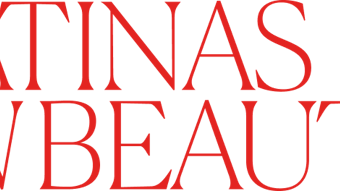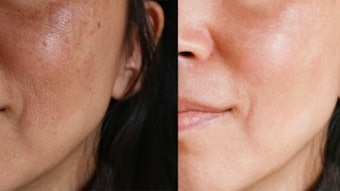- The growth rate of beauty and personal care in China slipped below 10% in 2012—only the second time in two decades that China’s growth dropped into single digits.
- The possibility of slower growth in Brazil and China reinforces the importance of building stronger positions in smaller but potentially faster-growing emerging markets.
- In Mexico, spending over the next five years is forecast to bulge by approximately $2.5 billion.
- India is beginning to stand out as a new engine of global growth. In 2012, retail spending on beauty and personal care climbed by 18%—equivalent to $1.4 billion of growth in absolute terms.
- In 2012, mass cosmetics were again at the heart of the global growth story, fueling more than $16 billion of growth in absolute terms.
- Emerging economies accounted for nine of the top 10 growth markets for mass products in 2012; the U.S. was the only developed country in that group.
- The significant and ongoing rise of multitasking brands, such as BB creams, was one of the defining trends of 2012.
- Anti-aging functionality is big business both in emerging and developed markets, and it helped propel global retail value of skin care to almost $100 billion in 2012.
- In terms of strategic development, hair care, like skin care before it, is growing by developing more specialized products and promoting a multi-step routine.
With notable growth, 2012 was a resurgent year for the beauty industry. Global retail sales (measured at fixed U.S. dollar exchange rates) grew by 6%, according to newly released data from Euromonitor International. It was the industry’s best performance in more than a decade, and a return to the growth trajectory seen prior to the global financial crisis.
Multinational players can ill afford to be complacent, however. Yes, markets in Western Europe, North America, Australasia and the advanced economies of Asia-Pacific generated growth in 2012, to varying degrees. And yes, the developed markets as a whole were key drivers of burgeoning demand for nail polish, anti-agers and a new generation of multifunctional brands (such as BB creams)—but the global scales of growth were still precariously one-sided. Developed markets accounted for less than a fifth of the industry’s worldwide incremental retail value (or absolute growth).
On that basis (i.e., share of growth), 2012 was actually the weakest performance of developed markets in three years. It would be wrong, therefore, to think that the industry is back to its pre-financial crisis best. Developed markets might never get back to the 40% share of growth they commanded before the Lehman bust, but the disparity with emerging markets needs to narrow rather than widen.
The Dependency Risk
The relative weakness of developed markets is indicative of a shift in global consumption power, but it is sustainable for multinational companies’ top lines only in so far as the emerging markets continue to outperform. Consider the case of Procter & Gamble, the industry’s biggest player. The developed markets account for more than 50% of Procter & Gamble’s retail sales in beauty and personal care, but they fueled less than 10% of absolute retail value growth in 2012, according to Euromonitor International.
Procter & Gamble’s beauty and personal care division was able to deflect that weakness, as it has since 2008, by strong performances in the emerging regions. Brazil and China alone accounted for almost half of the company’s incremental growth in 2012. It was a similar story for other leading players. Unilever, for example, generated over $1 billion of growth in Brazil last year, which was a third of the company’s total incremental retail value in beauty and personal care.
The problem is that neither China nor Brazil can be considered safe havens. Indeed, it is an ominous sign that the growth rate of beauty and personal care in China slipped below 10% in 2012. This is only the second time in two decades that China’s growth has dropped into single digits. On paper, growth in Brazil was much more bullish, at 17%. However, the impact of a cooling economy did not kick in until the end of the year.
Critically, retail sales in the fast-growing Brazilian regions of the north, northeast and center-west softened in the final quarter of 2012, according to the Instituto Brasileiro de Geografia e Estatística (IBGE) national statistics agency (retail sales in the north and center-west lagged behind the national average in the fourth quarter, for example). This is a big deal because those regions have been instrumental to the consumer goods growth story in Brazil.
New Growth Frontiers
The possibility of slower growth in Brazil and China reinforces the importance of building stronger positions in smaller but potentially faster-growing emerging markets. In 2012, Mexico’s economy grew four times faster than Brazil’s, for example, and it is widely expected to repeat or better that performance in 2013 and 2014. Mexico has been in Brazil’s shadow for most of the past decade, but its revitalized economy is filtering into middle-class confidence and making it one of the most attractive markets in the world for new consumer goods investment.
In 2012, Mexico’s retail spending on beauty and personal care increased by 8%, at fixed U.S. dollar prices. What is more, spending over the next five years is forecast to bulge by around $2.5 billion in absolute terms. The middle class is mushrooming in Mexico and spreading into traditionally poorer second-tier cities, such as Toluca, Celaya, Mérida and Querétaro. This is bringing in its wake new retail investment in the form of malls and supermarkets.
India is also beginning to stand out as a new engine of global growth. In 2012, retail spending on beauty and personal care climbed by 18%, which was equivalent to $1.4 billion of growth in absolute terms. Much of India remains blanketed in poverty, but there is evidence that wealth is starting to bud in some rural areas. Given the sheer size of India’s rural population (840 million in 2012), even a small increase in wealth could yield a highly significant upside for beauty and personal care products.
Other key second-tier markets to watch include Venezuela, Iran, Argentina, Indonesia, Saudi Arabia and Turkey. Each one is forecast to generate average annual beauty and personal care growth of 10% or more to 2017, according to Euromonitor International. These markets are not without their risk factors. Venezuela is in a state of limbo in the wake of the death of Hugo Chávez, and Iran’s political and social fabric is volatile, for examples. To mitigate risk, the beauty industry needs to be strengthening positions across a wide range of markets.
The Nail Polish Revolution
In 2012, mass cosmetics were again at the heart of the growth story, fueling over $16 billion of growth in absolute terms—compared with $4 billion for premium cosmetics. Emerging economies accounted for nine of the top 10 growth markets for mass products, spearheaded by Brazil, China, India and Argentina.
The U.S. was the only developed country in that group of top 10 growth markets, helped by a 27% surge in nail polish sales. Nail polish is now a billion dollar market in the U.S., with spending having doubled in the space of only three years. Indeed, nail polish was one of only a handful of categories in which developed markets were key to global growth last year. Strong double-digit growth was registered in Germany and France, for example. Upbeat sales in key developed and emerging markets have turned nail polish into the fastest-growing category for four years running. Sales were up 13% in 2012 compared with 6% for lipstick.
The growth trajectory of nail polish shows no sign of slowing. The probability of long-term macroeconomic instability in developed markets together with untapped growth potential in emerging markets could even see spending on nail polish overtake spending on lipstick over the next 10 years. That would have been unthinkable five years ago. The power of nail polish is rooted in its affordability as a fashion accessory. Women can show off their individuality, for example, without the need to splurge on new clothes.
The Multitasking Trend
The rise and rise of multitasking brands, such as blemish balm (BB) creams, was one of the defining trends of 2012. BB became so much of a hit that some brand owners started to attach the abbreviation to brands that were not, strictly speaking, BB creams. BB can encompass more functions than you can shake a stick at. Skin toners, moisturizers, primers, illuminators, foundation creams and sunscreens are all in the mix, and normally in one tiny package.
To build on the momentum of BB creams, the industry has ramped up development of CC (color correction) creams. They act at once as anti-agers, color correctors and UV protectors, and could become as popular as their BB forerunners. Anti-aging functionality is big business both in emerging and developed markets, and helped propel the global retail value of skin care to almost $100 billion in 2012.
Sun protection is virtually a given for the new generation of multifunctional skin and color cosmetics brands, but this has inevitably wielded a negative impact on the sun care category. Although retail sales of sun care were up 6% in 2012, buoyed by strong demand in Brazil, it was one of only two categories not to improve on its 2011 global performance.
Fragrances was the other category to show weaker growth in 2012 (versus 2011). This was due in large measure to negative cross-category competition from deodorant sprays. Young men, in particular, are using deodorant sprays as a low-price alternative to aftershave or fragrance. And some brands, such as Unilever’s Axe, even market themselves as much as a fragrance as a deodorant. In 2012, global sales of Axe broke the $2 billion mark, according to Euromonitor International.
Men’s grooming was another of the big growth stories of 2012. In Brazil, India and Argentina, the category grew by more than 20%, for example. Hair care also put in a strong performance globally. In terms of strategic development, it has taken a page out of skin care’s book, first by developing more specialized products (such as hair loss and thickening treatments) and secondly by promoting a multistep routine. For example, consumers are being encouraged to use oils, overnight treatments and hair masks in addition to shampoo and conditioner.
Balancing Developed With Emerging Market Strategy
On current trends, sales of beauty and personal care products will be higher in the emerging markets than in the developed markets as soon as 2015. This is indicative of a seismic global shift in middle-class consumption power. Indeed, the BRICs and second-tier emerging markets are virtually impossible for multinational manufacturers to ignore if they are to achieve their growth targets.
Equally, the industry needs to be mindful of relying too heavily on emerging markets to shore up growth and profitability. The success of nail polish, anti-agers, specialized hair care and multifunctional cosmetics shows that the developed markets continue to present attractive niche opportunities. These niches need to be nurtured, and new ones also need to be unlocked.
Rob Walker, senior fast-moving consumer goods analyst, Euromonitor International, can be contacted at [email protected].










